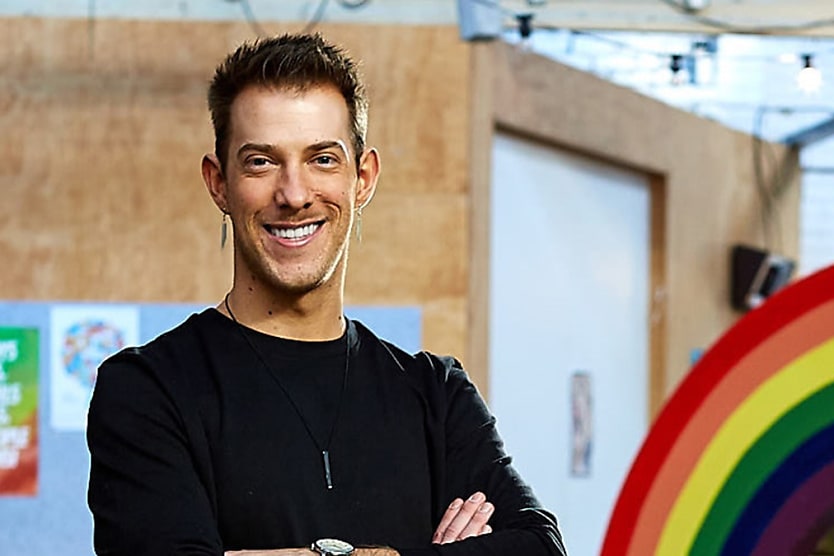LGBTI inclusivity can help foster a healthy workplace
SHARE THIS ARTICLE

Today (17 May) is International Day Against Homophobia, Biphobia and Transphobia (IDAHOBIT). Workers should take the time to reflect on the many challenges faced by the LGBTI community and how fostering inclusion in the workplace can help to create a safe environment.
Across Australia, 11 per cent of people identify as part of the LGBTI community. With more than one in 10 in the workplace potentially on this spectrum, fostering inclusion should be on the minds of every employer.
Concerningly, however, just 38 per cent of LGBTI people are open to everyone, according to data referenced by the founding chief executive of queer youth charity, Minus18, Micah Scott.
“Research shows that workplaces have higher employee engagement and productivity when LGBTQIA+ people feel welcome and supported,” he said.
To assist leaders in creating an inclusive environment, Scott outlined six important considerations:
- Understand and use inclusive language: The language we use holds significant power, and signals to others our understanding of identity and inclusion. Using the right language can foster a sense of inclusivity and safety, while misuse of language can cause someone to feel unwelcome and isolated. Whether it’s interpersonal conversations or official correspondence, taking the time to learn and use inclusive language can make a difference to the experience of LGBTI people at work. A simple starting point is to use gender-neutral terms when you don’t know someone’s gender or sexuality, i.e., referring to a “partner” rather than assuming someone has a boyfriend or a girlfriend.
- Call out inappropriate language or behaviour: LGBTI people are usually the ones expected to call out or report inappropriate conduct when it happens. But the data tells us that this expectation is often more challenging, and additional barriers can exist for LGBTI people – whether it’s fear of being outed, targeted or risks to job security. Being an active ally means speaking up when you see misconduct, especially if you are not personally impacted by it. For workplaces, this means creating visibility for reporting processes and standards of behaviour to all employees, leaders and especially new starters.
- Host a workplace LGBTI inclusion training: Inclusion starts with education. Company-wide education ensures the entire team is aligned not just in understanding but also in creating meaningful actions to build ongoing inclusion together. These sessions are a great opportunity to connect with an expert with lived experience and ask questions in a safe environment.
- Ensure LGBTI voices are centred: Building LGBTI inclusion in the workplace can carry ongoing decisions about policy and practice. When implementing decisions about or for inclusion, ensure that LGBTI people are represented within this process. For bigger organisations, this might include the creation of an LGBTI employee network, or inviting LGBTI team members to opt-in and form a working group to advise on workplace policies. If you’re a smaller company, you can host structured consultations, and actively seek these perspectives on decisions before they occur.
- Overcome bias: We are all naturally affected by our own biases. One of these is “similar-to-me bias”, where managers are likely to rate people with similar interests, skills and backgrounds more highly than people who are different from them, including LGBTI people. When looking to overcome this bias, the first step is to be clear about the process and the structure for how a decision is made. Within this process, identify where it’s possible for more people to be part of it – whether as shared decision-makers or to consult on the final decision. Finally, ensure that this process represents individuals with different lived experiences – including those who are LGBTI.
- Be visible in your allyship: Visibility is a powerful way to signal LGBTI inclusion – especially in overcoming the assumption that a space is not inclusive. Some simple ways workplaces and employees can show their visible allyship are:
-
- Display the rainbow flag – whether in a common area or on your desk, wearing a rainbow pin or lanyard, or popping up some inclusion posters signals to your organisation that your workplace is a safe space.
- Share your pronouns. It’s not possible to tell the pronouns that someone uses just by talking to them. Individuals can wear their pronouns with their name badge, and workplaces can add pronouns as a field to email signatures.
- Celebrate LGBTI days of significance – these days demonstrate a company-wide commitment to LGBTI inclusion, and days like IDAHOBIT have been shown to spark ongoing, positive change throughout the year.
RELATED TERMS
According to the Australian Human Rights Commission, discrimination occurs when one individual or group of people is regarded less favourably than another because of their origins or certain personality traits. When a regulation or policy is unfairly applied to everyone yet disadvantages some persons due to a shared personal trait, that is also discrimination.
Jack Campbell
Jack is the editor at HR Leader.

